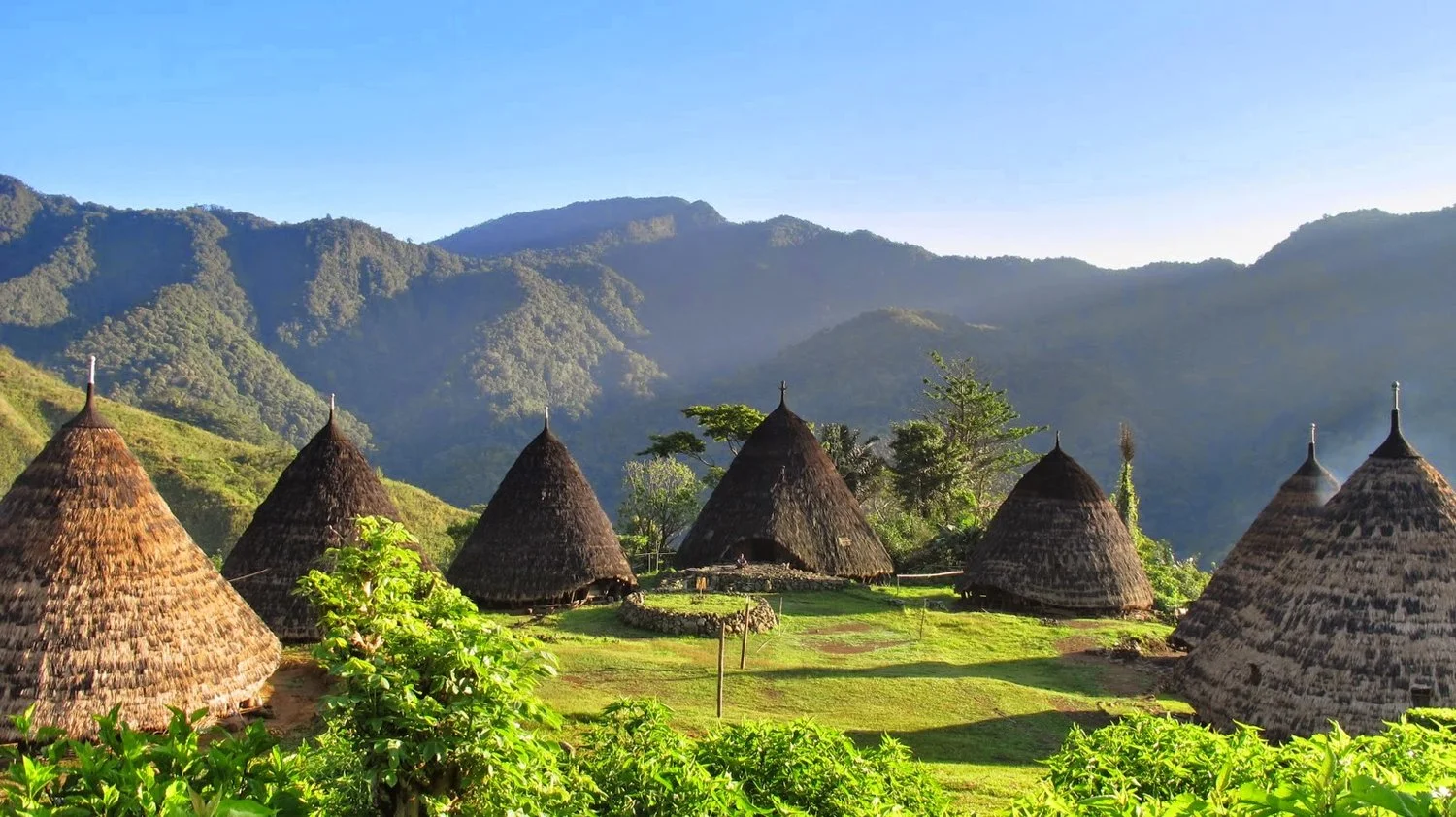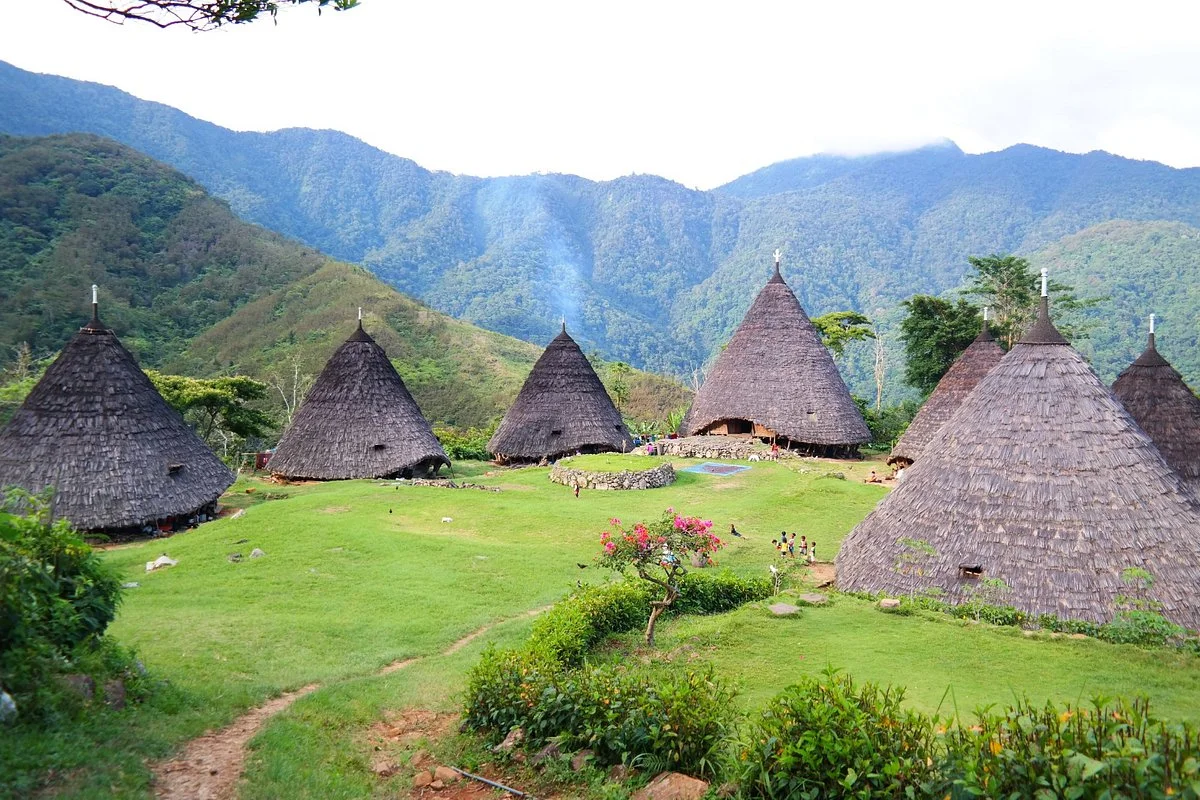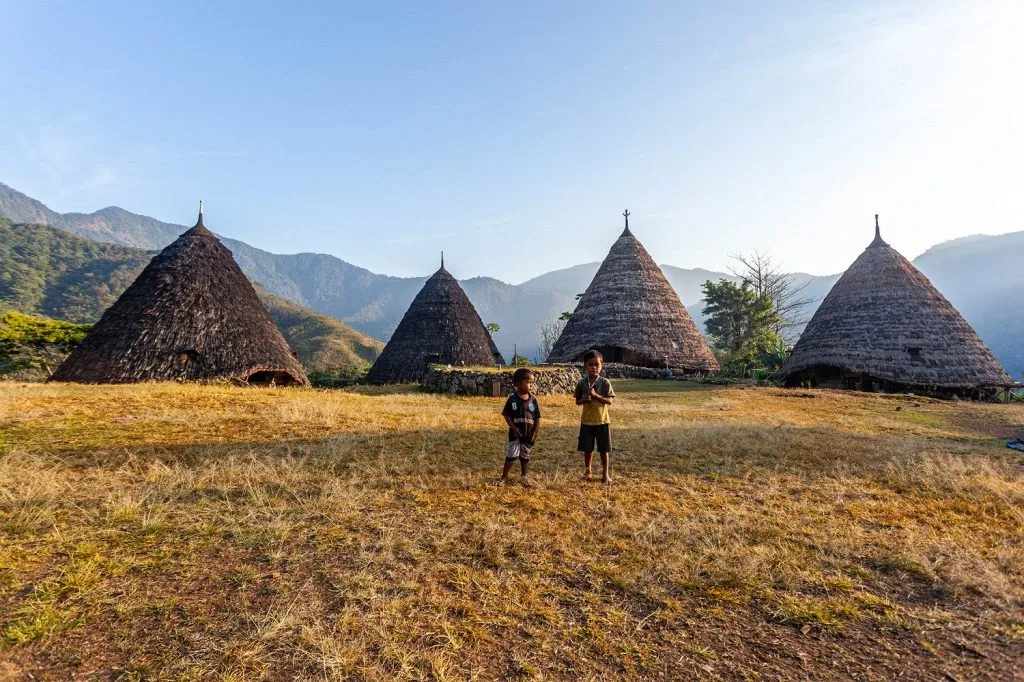Discover the enchanting beauty of Wae Rebo Village, a hidden gem nestled in the heart of Indonesia’s Flores Island. With its rich cultural heritage and breathtaking landscapes, this traditional Manggarai village offers an immersive experience like no other.
Step into a world untouched by modernity as you embark on a journey into the heart of Wae Rebo. Surrounded by lush forests and mist-covered mountains, this remote village captivates with its traditional cone-shaped houses known as Mbaru Niang. Get ready to be awestruck by the architectural marvels and the warm hospitality of the local community, who have preserved their unique way of life for generations.
Immerse yourself in the rich tapestry of Manggarai culture as you engage with the locals, participate in traditional ceremonies, and savor authentic cuisine. Explore the surrounding area and embark on scenic hikes to witness stunning panoramas. From cascading waterfalls to terraced rice fields, Wae Rebo Village is a haven for nature lovers and fiatogel login avid adventurers.
Visit Wae Rebo Village and embark on an unforgettable journey to a place where time stands still, where tradition and natural beauty merge. Come experience the magic of this hidden treasure in the heart of Indonesia.

History and Culture of Wae Rebo Village
Wae Rebo Village is steeped in history and holds a significant place in the cultural heritage of Indonesia. The village was established in the 19th century by the Manggarai people, who migrated from the surrounding areas. The unique architecture of the village, with its cone-shaped houses, reflects the strong connection the Manggarai people have with their ancestors and the natural environment.
The traditional houses, known as Mbaru Niang, are built using traditional construction techniques and materials sourced from the surrounding forests. The conical shape of the houses is not only aesthetically pleasing but also serves a practical purpose by allowing rainwater to run off easily. The village is also home to a sacred ancestral shrine, where the community gathers to perform rituals and ceremonies.
Visitors to Wae Rebo Village have the opportunity to learn about the customs and traditions of the Manggarai people. The locals are proud of their heritage and are eager to share their knowledge with visitors. From traditional music and dance performances to storytelling sessions, there are plenty of opportunities to immerse yourself in the vibrant culture of Wae Rebo Village.
How to Get to Wae Rebo Village
Getting to Wae Rebo Village requires a bit of planning, but the journey is well worth it. The village is located in the western part of Flores Island, approximately 1,200 meters above sea level. The nearest town to Wae Rebo Village is Ruteng, which can be reached by a domestic flight from Bali or Jakarta.
From Ruteng, the journey to Wae Rebo Village continues by road. It takes around three hours to reach the village from Ruteng, and the route offers breathtaking views of the surrounding landscapes. Alternatively, there are also guided tours available that provide transportation from Ruteng to Wae Rebo Village.
Once you arrive at the village, be prepared for a short hike to reach the main settlement. The hike takes approximately one hour and follows a well-marked trail through the dense forests. The journey itself is an adventure, with opportunities to spot wildlife and enjoy the natural beauty of the area.
Things to Do in Wae Rebo Village
Wae Rebo Village offers a range of activities and experiences for visitors to enjoy. One of the highlights is exploring the village itself and admiring the unique architecture of the Mbaru Niang houses. Take a stroll through the narrow pathways and interact with the friendly locals, who are always willing to share stories about their way of life.
For those seeking outdoor adventures, Wae Rebo Village is surrounded by stunning natural landscapes. Embark on a guided hike to the nearby peak of Mount Nuang and be rewarded with panoramic views of the surrounding mountains and valleys. The hike is moderately challenging but suitable for most fitness levels.
Another must-visit attraction in Wae Rebo Village is the nearby Todo Village. Located just a short distance away, Todo Village is known for its traditional houses and ancient megalithic stones. Take a day trip to explore this fascinating village and learn about the unique cultural practices of the Manggarai people.

Accommodation Options in Wae Rebo Village
Staying overnight in Wae Rebo Village is a truly immersive experience. The village offers homestays, where visitors can spend the night in one of the traditional Mbaru Niang houses. The homestays are basic but comfortable, with bedding provided. It’s a chance to experience firsthand the simplicity and tranquility of village life.
During your stay, you’ll have the opportunity to engage with the local community and learn more about their way of life. The villagers are known for their warm hospitality and will make you feel right at home. Enjoy traditional meals prepared by the villagers, using locally sourced ingredients and traditional cooking methods.
For those who prefer more modern amenities, there are also accommodation options available in Ruteng. From budget guesthouses to mid-range hotels, Ruteng offers a range of choices to suit different preferences and budgets. However, staying in Wae Rebo Village itself provides a unique and authentic experience that can’t be replicated elsewhere.
Local Cuisine in Wae Rebo Village
One of the highlights of visiting Wae Rebo Village is the opportunity to savor authentic Manggarai cuisine. The village is known for its traditional dishes, which are made using fresh and locally sourced ingredients. From spicy curries to grilled fish, the flavors of Manggarai cuisine are sure to delight your taste buds.
A popular dish in Wae Rebo Village is “Pancasila,” a traditional Manggarai soup made with a variety of vegetables, meat, and spices. The soup is hearty and flavorful, perfect for warming up on cool mountain evenings. Another must-try dish is the “Ikan Bakar,” which is grilled fish marinated with a blend of local spices and served with a side of steamed rice.
During your stay in Wae Rebo Village, don’t miss the opportunity to try the local coffee. The village is known for its high-quality coffee beans, which are grown in the surrounding hills. Enjoy a cup of freshly brewed coffee and savor the rich and distinctive flavors.
Tips for Visiting Wae Rebo Village
Before visiting Wae Rebo Village, it’s important to keep a few tips in mind to make the most of your experience. Here are some useful tips:
- Pack appropriately: Wae Rebo Village is located at a higher altitude, so the weather can be cooler compared to other parts of Indonesia. Pack warm clothing and comfortable shoes for hiking.
- Respect local customs: Wae Rebo Village is a traditional community, so it’s important to respect their customs and traditions. Dress modestly and ask for permission before taking photos of the locals.
- Bring cash: There are no ATMs in Wae Rebo Village, so make sure to bring enough cash for your stay. It’s also a good idea to bring small denominations for purchasing souvenirs or paying for meals.
- Stay hydrated: The hike to Wae Rebo Village can be strenuous, so make sure to bring plenty of water to stay hydrated. There are no shops or convenience stores in the village, so it’s best to come prepared.
- Be mindful of the environment: Wae Rebo Village is known for its commitment to sustainable tourism. Help preserve the natural beauty of the area by disposing of waste properly and following any guidelines provided by the locals.
Sustainable Tourism in Wae Rebo Village
Wae Rebo Village is a pioneer in sustainable tourism practices in Indonesia. The local community has made a conscious effort to preserve their cultural heritage and protect the natural environment. Visitors are encouraged to support these efforts by practicing responsible tourism.
The village has implemented various initiatives to minimize the impact of tourism on its fragile ecosystem. These include waste management programs, reforestation projects, and the promotion of eco-friendly practices. By supporting local initiatives, visitors can contribute to the preservation of Wae Rebo Village for future generations.

Other Nearby Attractions to Explore
While Wae Rebo Village itself offers a wealth of attractions and activities, there are also other nearby attractions worth exploring. Here are a few suggestions:
- Spider Rice Fields: Located just a short distance from Wae Rebo Village, the Spider Rice Fields are a stunning example of traditional agriculture practices. The terraced rice fields create a mesmerizing pattern that resembles a spider’s web, hence the name.
- Cunca Rami Waterfall: A short drive from Wae Rebo Village, Cunca Rami Waterfall offers a refreshing escape from the tropical heat. The waterfall cascades into a natural pool, perfect for swimming and cooling off.
- Ruteng Nature Reserve: If you’re a nature lover, don’t miss the opportunity to explore the Ruteng Nature Reserve. The reserve is home to a diverse range of flora and fauna, including unique bird species and orchids.
Conclusion
A visit to Wae Rebo Village is a journey into the heart of Indonesian culture and natural beauty. From the traditional Mbaru Niang houses to the warm hospitality of the locals, every aspect of the village is a testament to the rich heritage of the Manggarai people. Explore the surrounding landscapes, immerse yourself in the local culture, and support the sustainable tourism initiatives of Wae Rebo Village. Come and experience the magic of this hidden treasure in the heart of Indonesia.
If the magic of this hidden gem has left you enchanted, we invite you to delve into another vibrant celebration of culture and color by exploring our article about Holi. From the tranquil beauty of Flores Island to the exuberant festivities of Holi, let the wonders of the world continue to ignite your sense of wonder and adventure.




